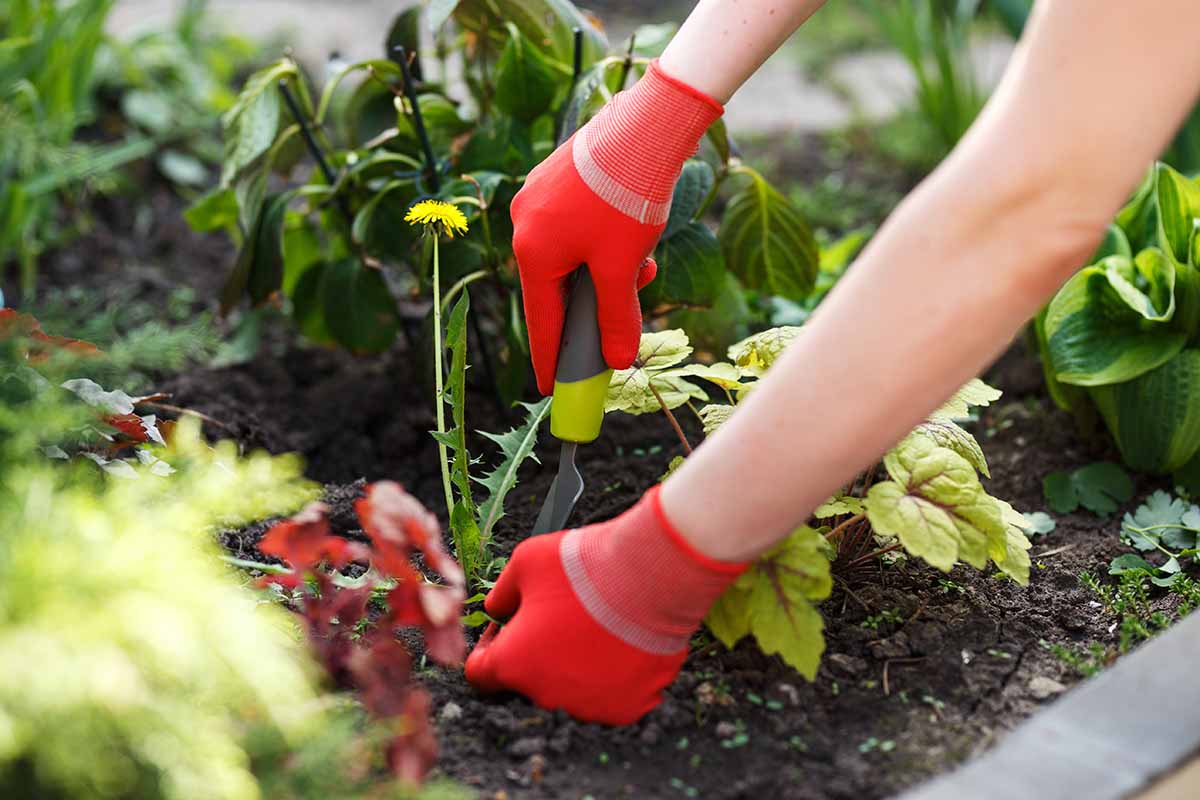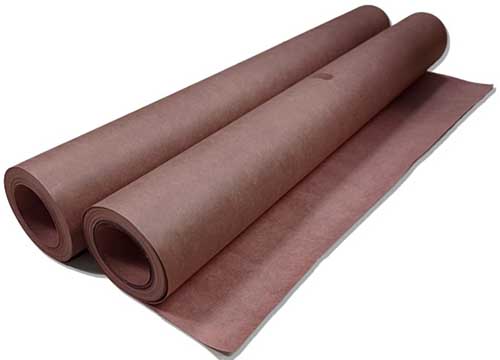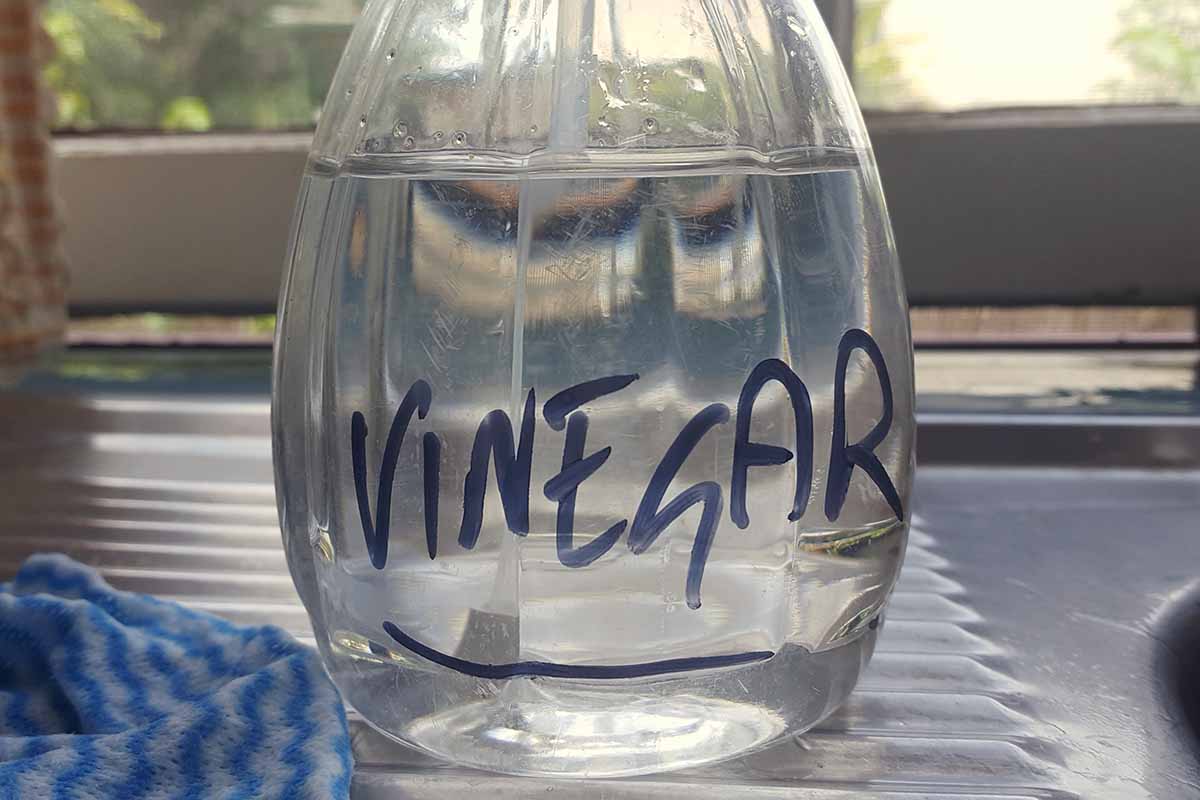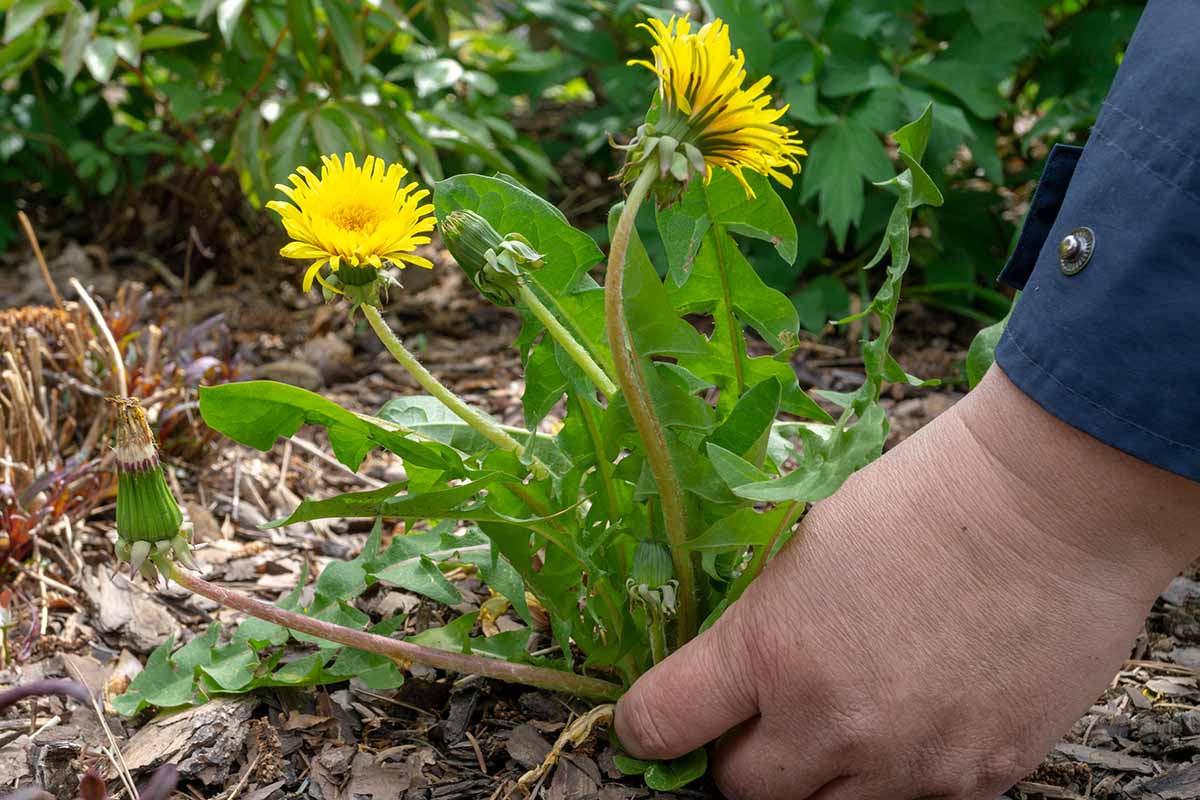How to Control Dandelions in the Lawn and Garden
Dandelions are common weeds that spread vigorously and can mar the beauty of a garden. Learn how to control dandelions in the lawn or garden in this guide.


Many of us adored dandelions when we were kids, blowing the fluffy seed heads and making wishes. But at some point, they stop being something magical and we see them as a nuisance in the garden.
Darn dandelions might have cheerful yellow inflorescences, but the serrated basal leaves can quickly take over an area and mar the appearance of the garden or lawn.


We link to vendors to help you find relevant products. If you buy from one of our links, we may earn a commission.
These plants are a nightmare to get rid of, their taproots can grow up to 18 inches long, and if you leave some in the ground, a new plant can regenerate from any leftover section larger than an inch.
Then there are all those seeds that float far and wide, starting babies everywhere they go.
In this guide, we’re going to discuss how to control dandelions in the garden. Just keep in mind as you look at these that you should use multiple methods of control.
One method is good, but employing two or three is better. Apply a pre-emergent, hand-pull anything that pops up, and apply a thick layer of mulch, for example.
Here’s what’s ahead:
How to Control Dandelions
- Pull Them Up
- Herbicides
- Mulch and Other Barriers
- What Doesn’t Work
Now, obviously, we’re going to discuss how to eliminate these unwanted plants.
But any guide to weed control wouldn’t be complete if we didn’t at least talk about a technique known as tolerance. That simply means learning to live with them.
The amount of money we waste and the damage we do to the environment trying to control dandelions in particular, is not good.
Gardeners everywhere are slowly starting to see dandelions in the lawn not as a sign of a slovenly space but as a normal part of being guardians over our little patches of the planet.


Many still see them as an unacceptable element that must be eliminated at all costs.
My neighbor will come over to my lawn, which I’m currently in the process of killing off so I can replace it with native ground covers, and he will dig up and dispose of any dandelion or false dandelion that he comes across.
To him, a perfect lawn is a status symbol. To me, it’s a waste of time, money, fertilizer, and water.
Neither one of us is right. It’s a matter of preference. But I totally understand where he’s coming from – we all want our yards to be beautiful, whatever that looks like to us.
If you don’t mind letting dandelions spread out a little, you can save yourself a lot of work and potentially money. In terms of damage and threat to cultivated plants, dandelions are some of the least problematic weeds we can have around.
So, let’s assume that you are determined to get rid of your dandelion problem. Let’s start out with the most cost-effective and environmentally friendly option.
1. Pull Them Up
This isn’t the solution most gardeners want to hear, but pulling the plants is the most effective solution for small areas.


Get yourself a dandelion-digging tool designed to pull up taproots and start working the day after you’ve had some rain.
You’ve probably seen these at pretty much every nursery and home supply store you walk in to.


Garden Guru Weeder Tool
Find one that is rust-resistant with an ergonomic handle, like this one from Garden Guru available via Amazon.
The key is to get out in the garden and dig them up consistently before the plants bloom to permanently eliminate the problem. Make sure you’re taking up as much of the root as possible.
2. Herbicides
There’s a reason why people turn to herbicides especially for larger areas: they work.


Broad, non-selective herbicides will kill everything in the area, which can exacerbate the problem.
If you kill a spot of lawn, it’s highly likely that dandelions or another weed will move into the area before the lawn has a chance to regenerate.
There are both chemical and natural herbicides available, which gives you options if you’d like to avoid chemicals that might contain carcinogens or products that might harm wildlife.
For a natural herbicide, look for something that uses corn gluten meal or iron, like Earth’s Ally Weed and Grass Killer, which harnesses sea salt to kill any plant it touches.


Earth’s Ally Weed and Grass Killer
Purchase it at Arbico Organics in a one-and-a-quarter pound concentrate, 24-ounce ready-to-use, or gallon ready-to-use containers.
Chemical options include products that contain carfentrazone, dicamba, glyphosate, isoxaben, and triclopyr.
A broadleaf herbicide targets only plants with broad leaves – like dandelions – rather than those with narrow leaves like grass, so it’s a better option for using on the lawn.
These contain chemicals like 2,4-Dichlorophenoxyacetic acid or carfentrazone to selectively kill herbaceous and woody plants with broad leaves.
Broadleaf herbicides have their own downsides. They will kill anything they touch that has broad leaves, so you might accidentally harm plants you want to keep.
Herbicide drift has become a real problem in commercial crops, and I’ve dealt with it more than once in my own garden.
Pre-emergent herbicides like isoxaben or indaziflam are effective at preventing the seeds from germinating, but they won’t help with taproots left in the soil.
There are a few products that combine pre-emergents with post-emergents, and these work well on young plants, but they don’t kill mature, established plants.
Bonide Captain Jack’s Lawnweed Brew is a pre- and post-emergent herbicide that will eradicate many broadleaf weeds in grassy areas.


Bonide Captain Jack’s Lawnweed Brew
Find it in 16 and 32-ounce concentrate containers at Arbico Organics.
Be sure to read our guide to using chemicals safely before you get to work!
3. Mulch and Other Barriers
This method won’t work in a lawn or an area where you’re growing ground cover since you want to cover bare soil, but it’s an excellent option to use in ornamental or vegetable gardens.


Heap three inches of mulch around any plants that you want to protect from dandelions, taking care to avoid touching the stems.
This will smother any seeds or root chunks, preventing them from sending up leaves.
Even better, add some landscape fabric or a weed barrier around your plants and put mulch on top of that.


WeedGuard Plus
Arbico Organics carries an excellent weed barrier option in WeedGuard Plus. The rolls come in a two-pack of 24-inch width and 50-foot length.
The downside of using mulch for this purpose is that organic materials will need to be replaced regularly as they break down.
When materials like leaf litter or bark breaks down, it creates the perfect substrate for new dandelion seeds to take hold.
You’ll want to rake it up or work it into the soil and top it with fresh mulch.
What Doesn’t Work
Alright, we’ve tackled the big three techniques that work. What about all those other bits of folk wisdom?
Household vinegar won’t kill these weeds – it isn’t strong enough. You need to use horticultural vinegar to effectively kill weeds, but even that won’t kill the taproot because it only works on the parts it touches.
Horticultural vinegar is also incredibly toxic and can seriously injure you or anyone nearby if you don’t wear protective clothing. Stick to the herbicides listed above instead.


Feel free to add Epsom salts to your dandelion patch. It won’t reduce their numbers, but it will add magnesium and sulfur to the soil to help the weeds grow even more abundantly.
Dish soap doesn’t work at all, even when you mix it with vinegar, so don’t bother. Dish soap is an excellent way to help whatever you mix it with to adhere wherever you spray it, but it doesn’t effectively kill plant tissue on its own.
Mowing regularly sounds like a good idea in theory because it helps to control many other weeds. If you repeatedly cut off the aboveground parts of some species like thistles, it deprives the roots of nutrients, and they will die. Not dandelions.
The rosette of foliage lacks stems and it sits well below the height of the mower blade, so you can’t cut the leaves that way. Plus, the roots can store nutrients to regenerate even if you cut them down over and over.
Burning or pouring boiling water will kill the aboveground parts, but these methods won’t kill the entire taproot unless you do it repeatedly for long enough to deprive the roots of nutrients. It’s usually easier just to pull the roots.
Whack Those Weeds
You will never get rid of dandelions forever. The seeds can float on the wind for miles, so even if you, your neighbor, and your neighbor’s neighbor remove every single one, all it takes is a stiff breeze, and you’re back to square one.
That’s why constant diligence is necessary. If you truly don’t want any of these weeds in your garden, you will have to keep watch and work at it nonstop throughout the growing season.


Where are your dandelion foes popping up? Are you dealing with a never ending stream in your lawn? Are they creeping up among the roses? Let us know your situation in the comments section below and we can offer some customized advice.
Maybe after reading this guide you’ve decided to put those dandelion weeds to work. If so, we have a few other guides you might be interested in reading, including:
- 15 Ways to Use Dandelion as Food and Medicine
- How to Make Dandelion Fertilizer from Unwanted Weeds
- How to Grow and Harvest Dandelions for Greens, Roots, and Flowers







